One nutrient I see lacking often? Protein. Here’s some tips and tricks to get enough in!
One of the nutrients I see lacking MOST in the clients I work with as a dietitian is PROTEIN. But this macronutrient has so many special roles in each one of our trillions of cells! So today I’m partnering with Jack Link’s Jerky to break down the role of protein, the difference between complete and incomplete proteins, & how to eyeball enough daily protein by breaking it down into meals and snacks! I’m so thankful for brands like Jack Link’s Jerky that I get to partner with, that allows me to continue creating all these free resources for you.
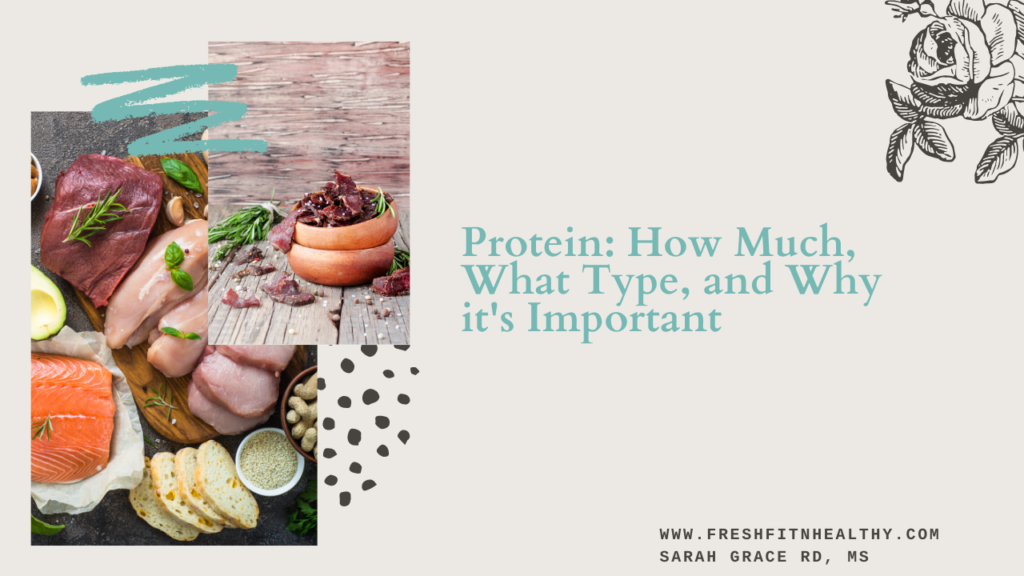
Ok so first off, let’s talk about why protein is so important!
Roles of PROTEIN:
- Protein supports:
- healthy digestion
- energy levels
- healthy metabolism
- hunger hormones
- meanwhile it also builds tissue (including muscular), and supports healthy skin and bones
So, it’s one we should make sure we’re getting enough of 🙂
But there is even MORE when it comes to the TYPE of protein.
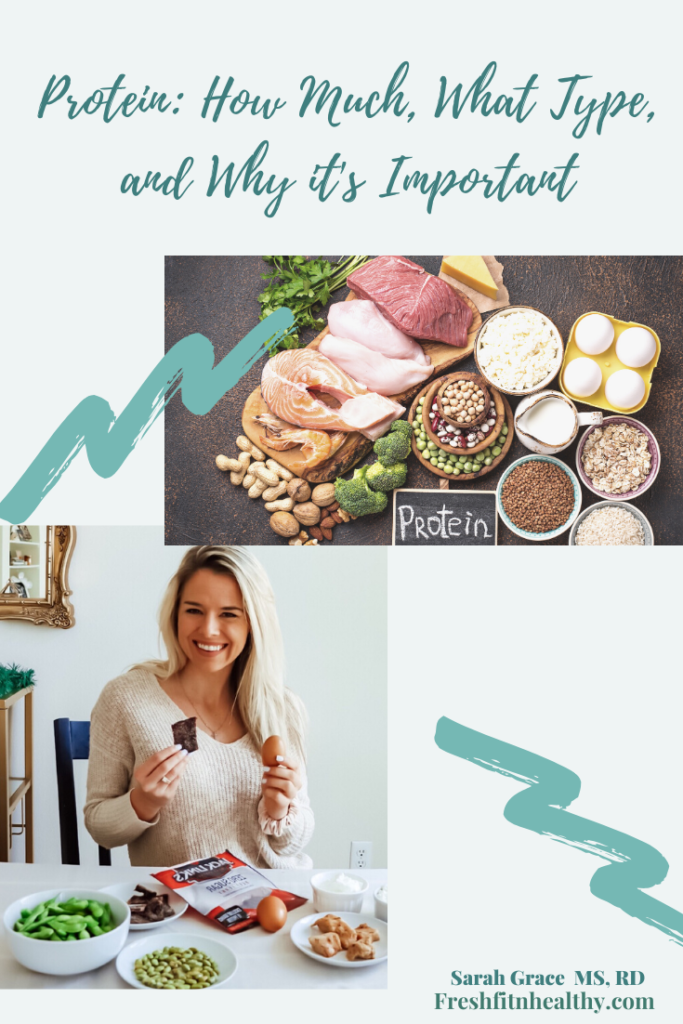
Essential, Non-Essential, Complete vs Incomplete Protein
Proteins are long chains of amino acids. All of the amino acids have a different function in our bodies, so it’s absolutely important that we eat a variety of them. Now there are 12 amino acids that our incredible human bodies actually produce for us! These are called the non-essential amino acids. But there are still 9 amino acids that we cannot produce, and must get by consuming them in our diet. These are the essential amino acids.
Complete proteins are proteins that contain all of the 9 essential amino acids. All animal proteins are complete proteins, including all of your red meats and white meats, fish, dairy and eggs. That’s why I also love Jack Link’s Jerky as a snack! It’s a great source of complete protein, which can sometimes be hard at snack times to get in. Plant sources of complete proteins include quinoa, tofu, buckwheat and some protein powders.
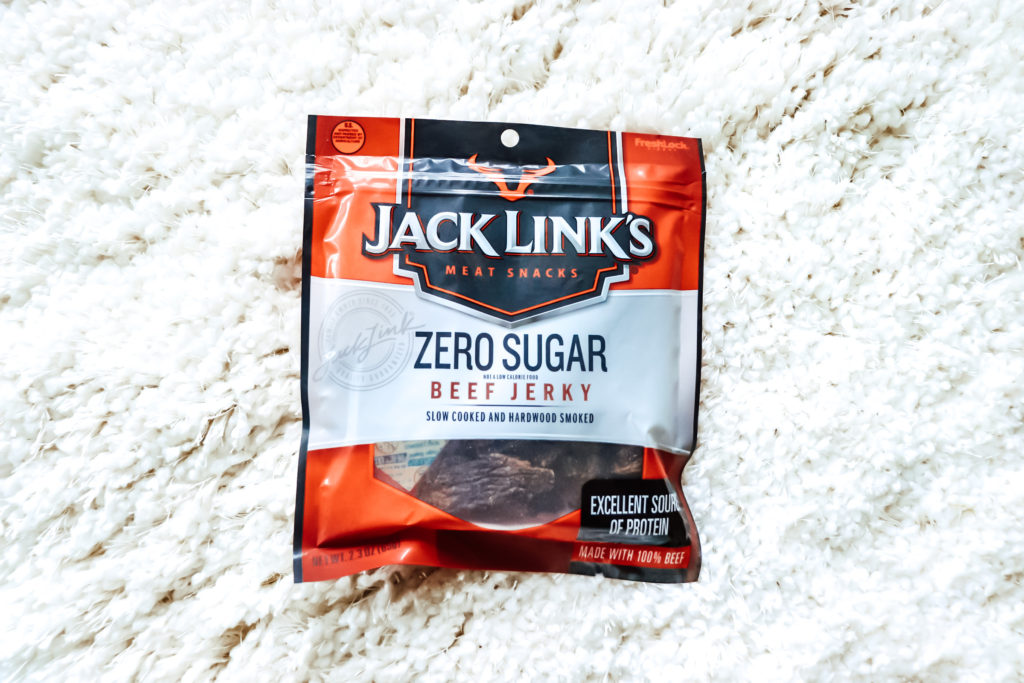
Incomplete proteins are those foods that only have a few of the essential amino acids. Fruits, vegetables, and legumes are examples of foods that lack some of the amino acids, but when these foods are paired with nuts, grains, and seeds, you’ve got yourself a complete protein meal! Depending on your body type and macronutrient calculator, aim your own rough percentage of daily intake from protein! Typically, 25-35% is best for most people.
How to Get in ENOUGH Protein
You may have seen this little infographic on instagram, but it is a great way to show the amount of protein we should be getting in at every meal and snack!
On average, if you get in about 15-20g of protein at every meal and snack, you’ll be well on your way to meeting your overall protein requirements. This gives them a way to “eyeball” 15-20g of protein, because that on average, should be about the minimum serving of protein at every meal and most snacks! Jack Link’s Jerky has been one of my favorite ways at snack time to get in good amounts of protein without any added sugar. Pair it with a healthy fat like some almonds and you’re really good to go! And for meals? I’ve been loving ground turkey because you can do SO much with it.
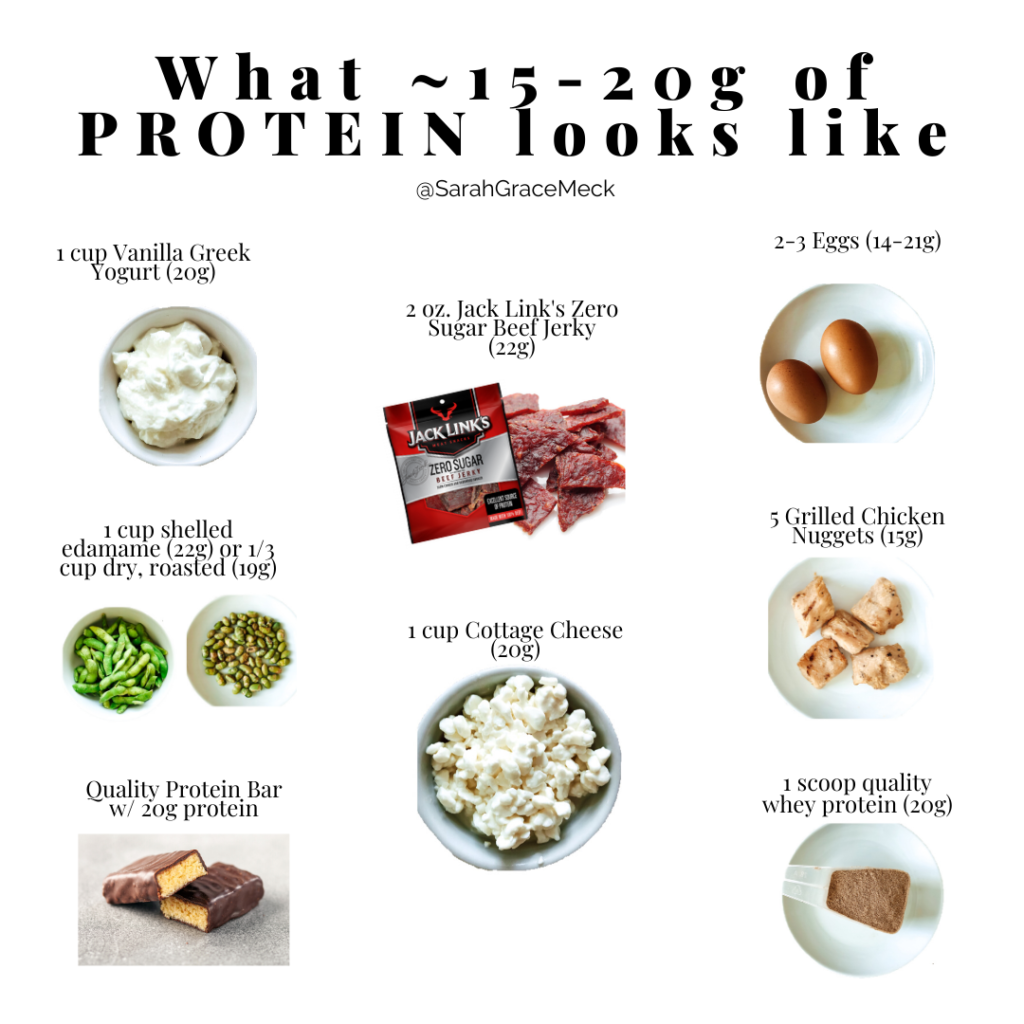
Look above at this photo. What are some things you enjoy here that could become part of your weekly meals and snacks?
Some of my favorite protein snacks and meal components:
- Snacks
- Jack Link’s Jerky
- Turkey and Cheese Roll Ups
- Edamame
- Protein Shake/Bar
- Greek Yogurt (with fruit or nuts)
- Cottage Cheese (with fruit and cinnamon)
- Some Grilled Chicken Nuggets (if I just need something to tie me over)
- Piece of Toast with Peanut Butter
- Homemade Protein Bites and Balls
- Meal Components
- Grilled Chicken
- Lean Beef/Steak
- Ground Chicken/Turkey
- Fish like Salmon and Tuna
- Shellfish
- Lean Pork
- Frozen Already Cooked Chicken Breasts, Turkey Burgers, or Veggie Burgers
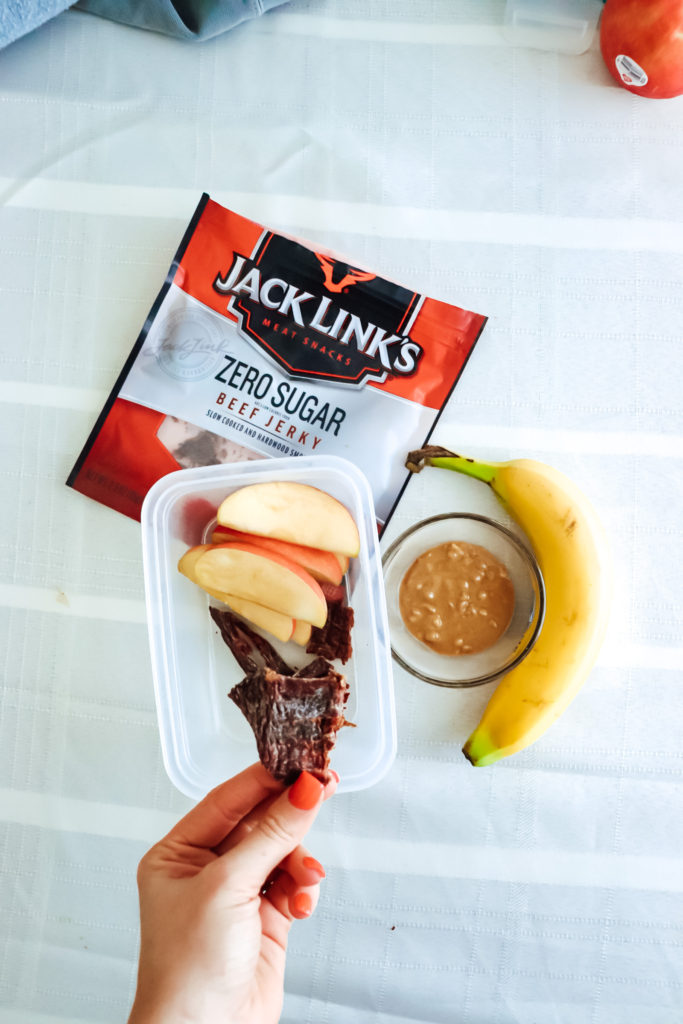
Ok so question for YOU now… What’s been some of your favorite sources of proteins lately? What did you learn most from this post?!
Until next time, come over to instagram and say hello!